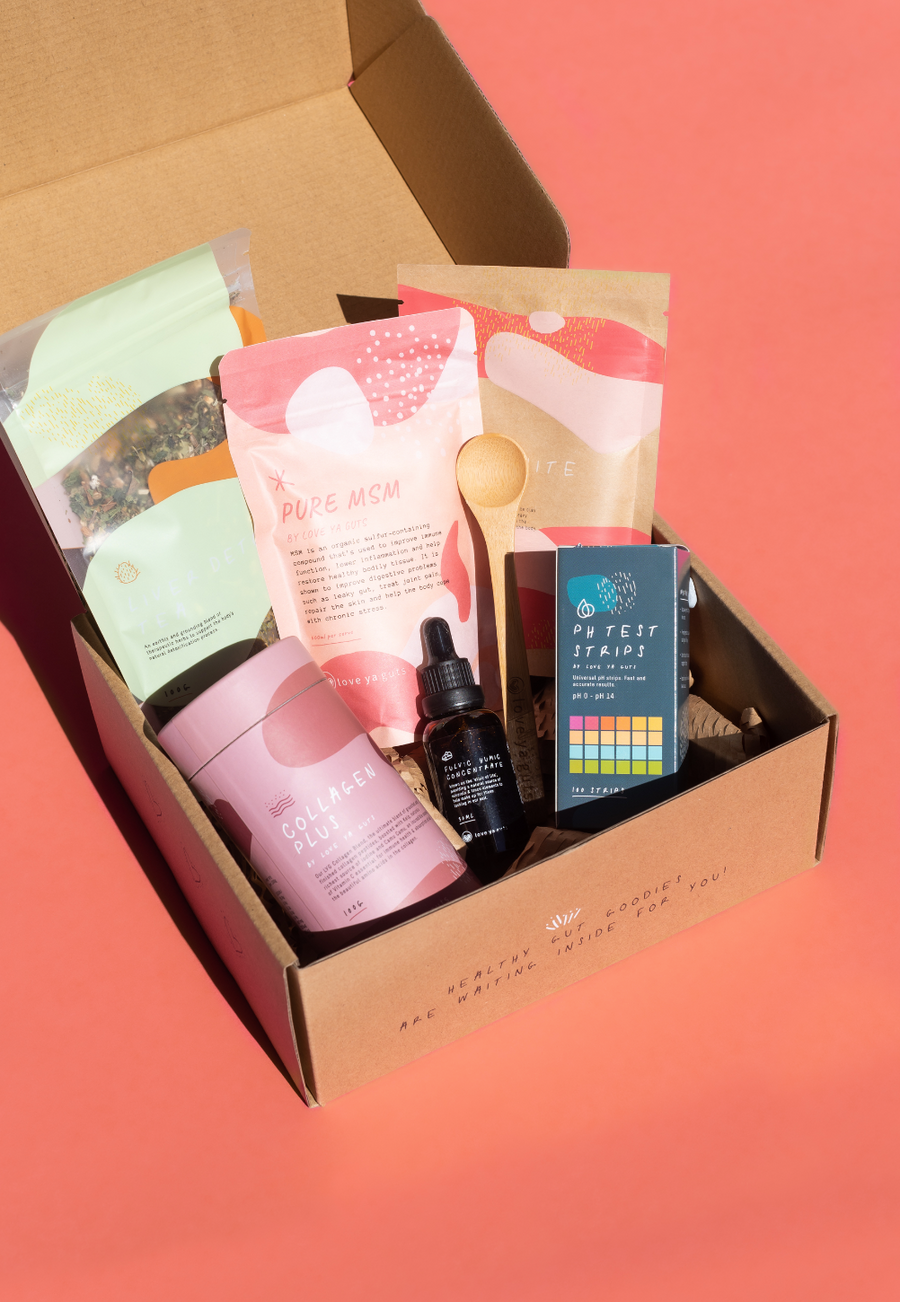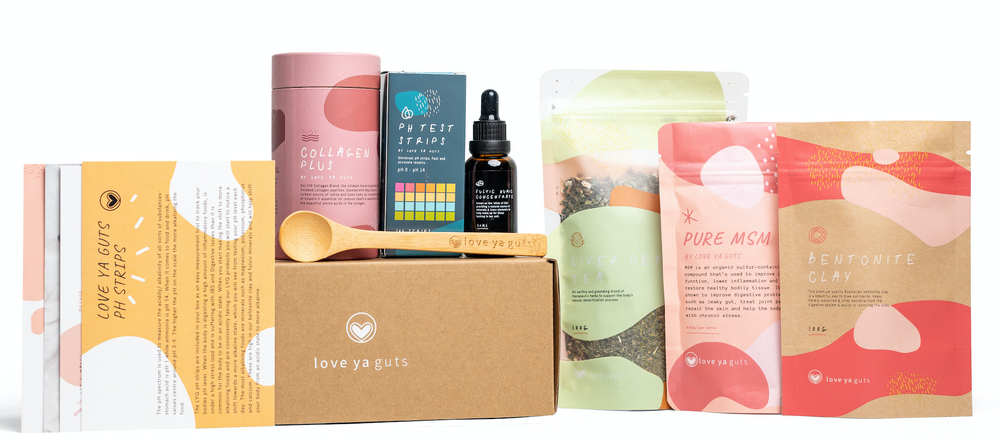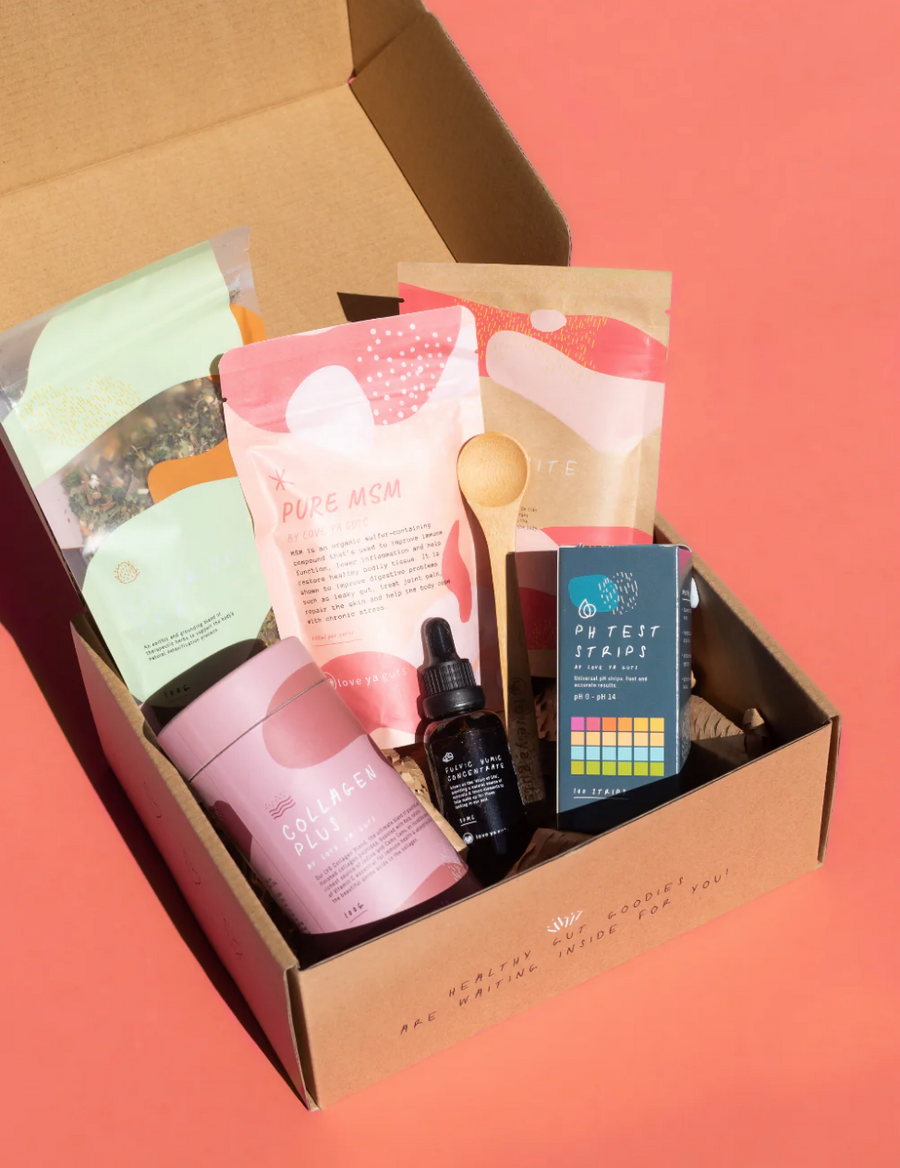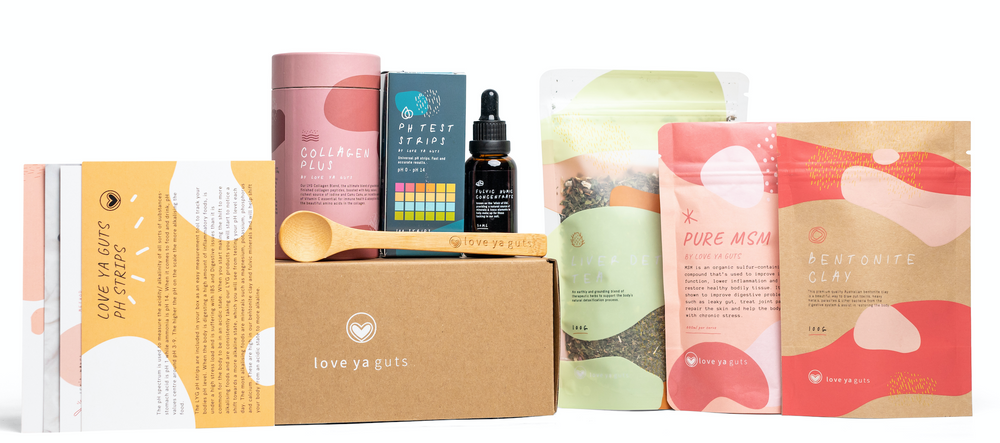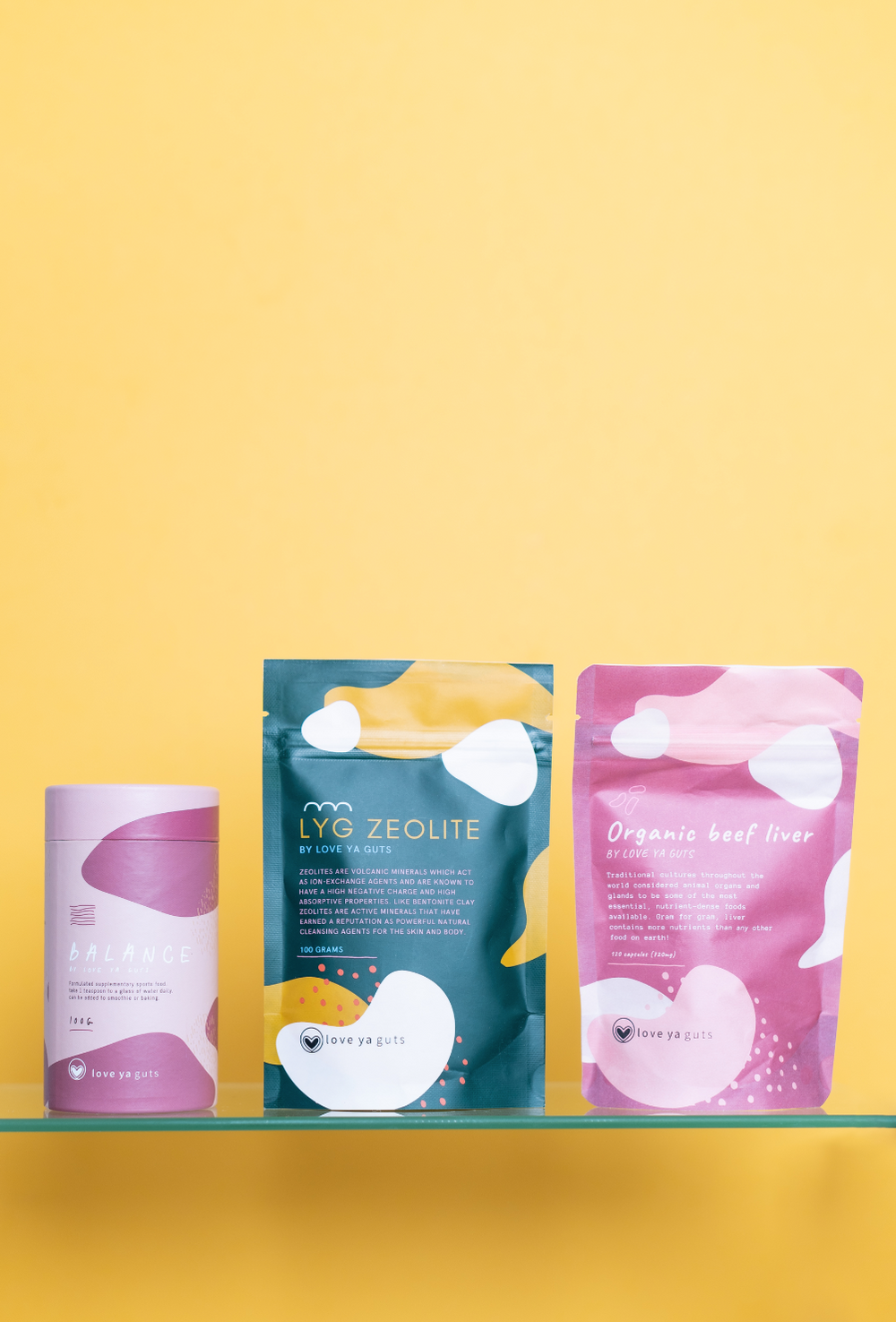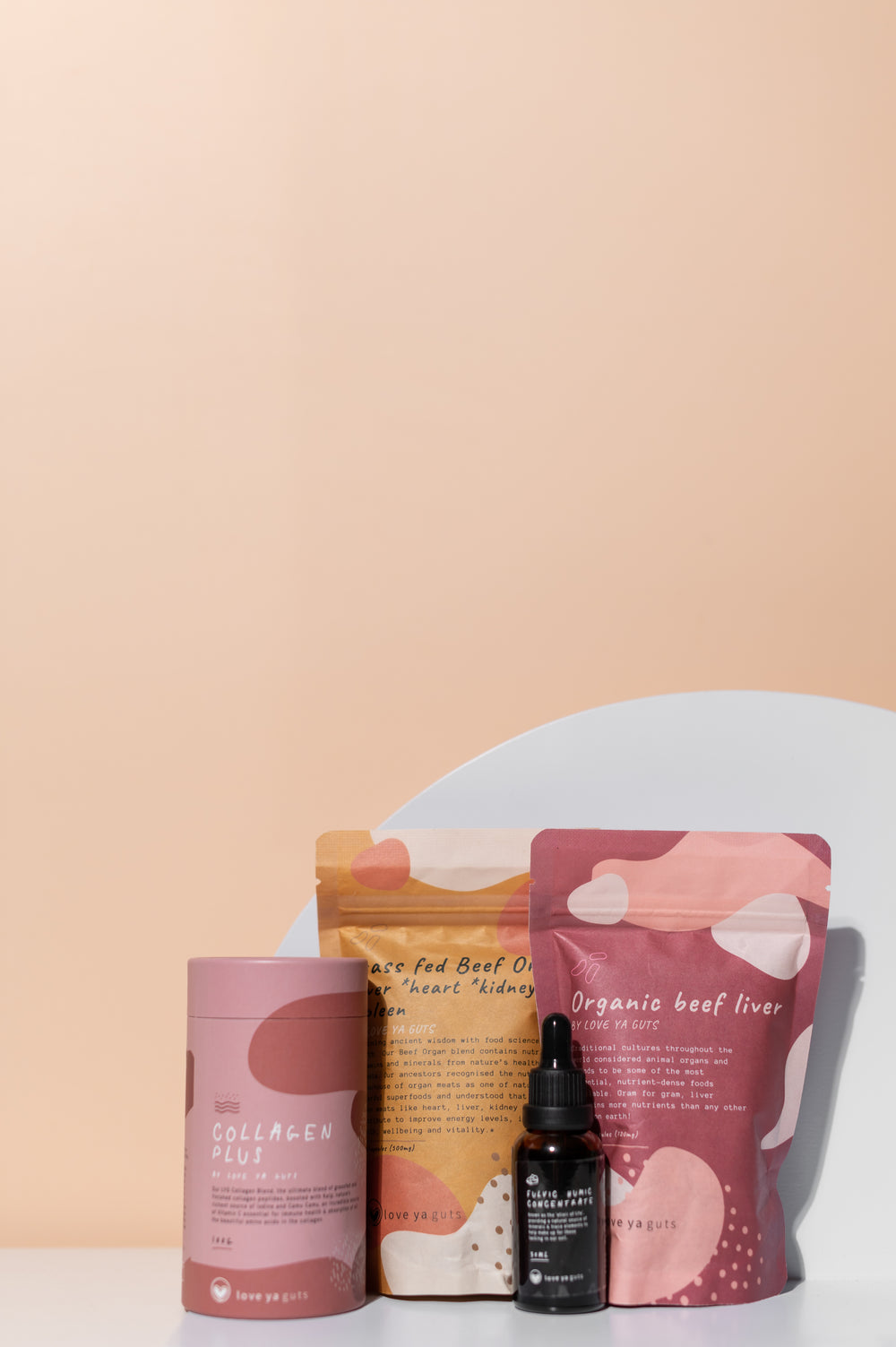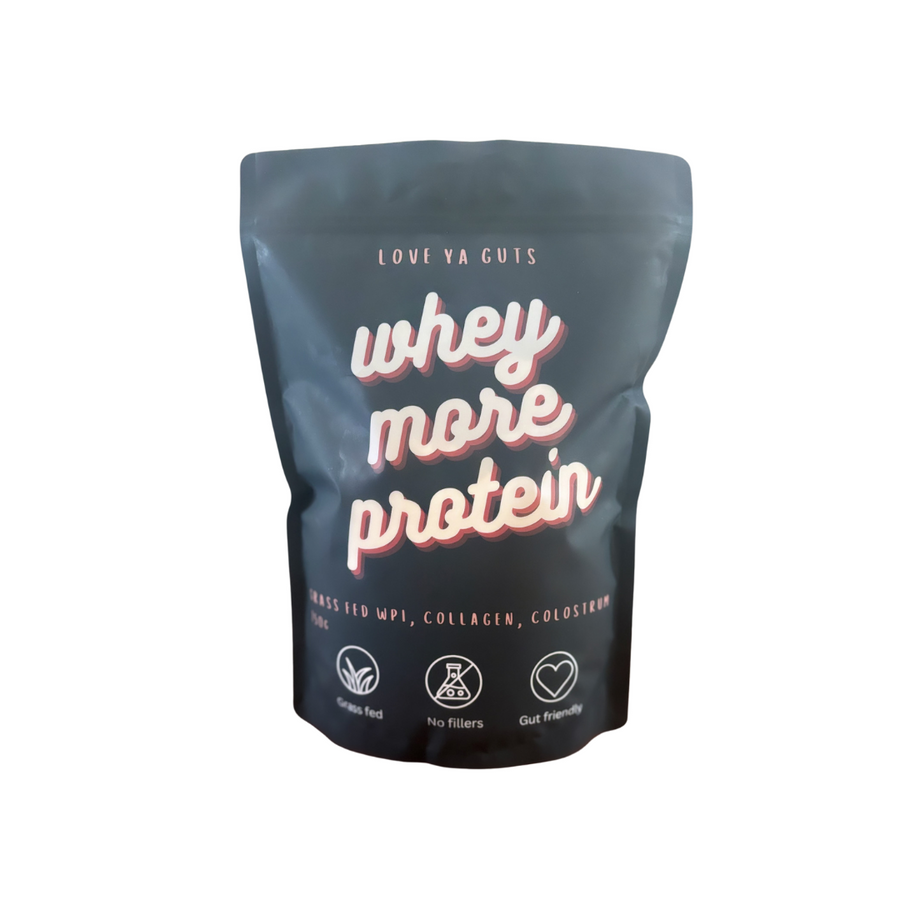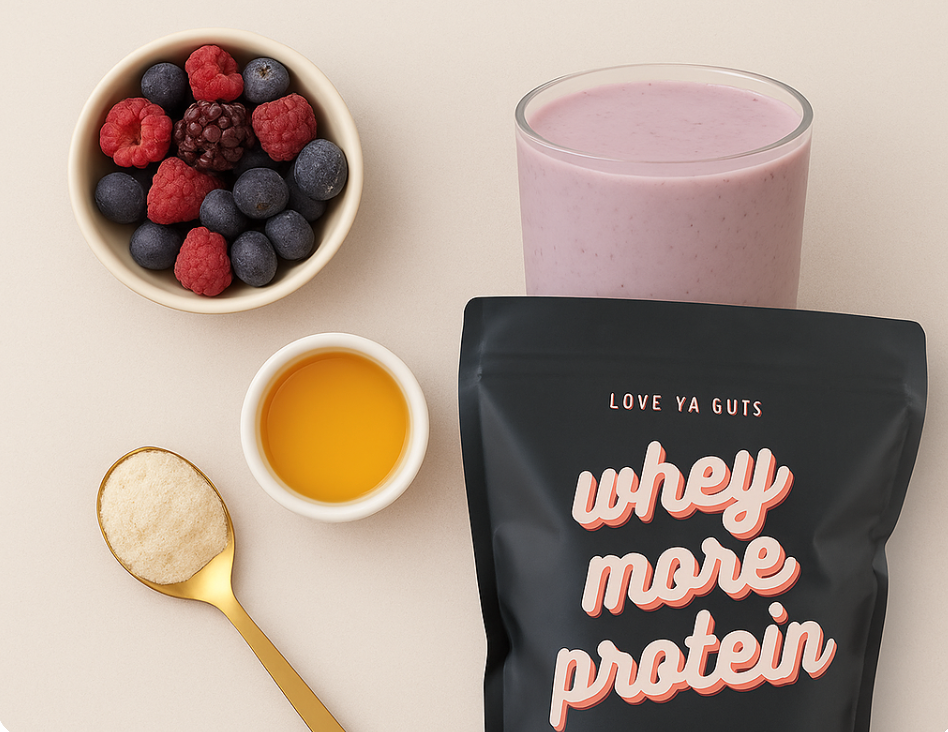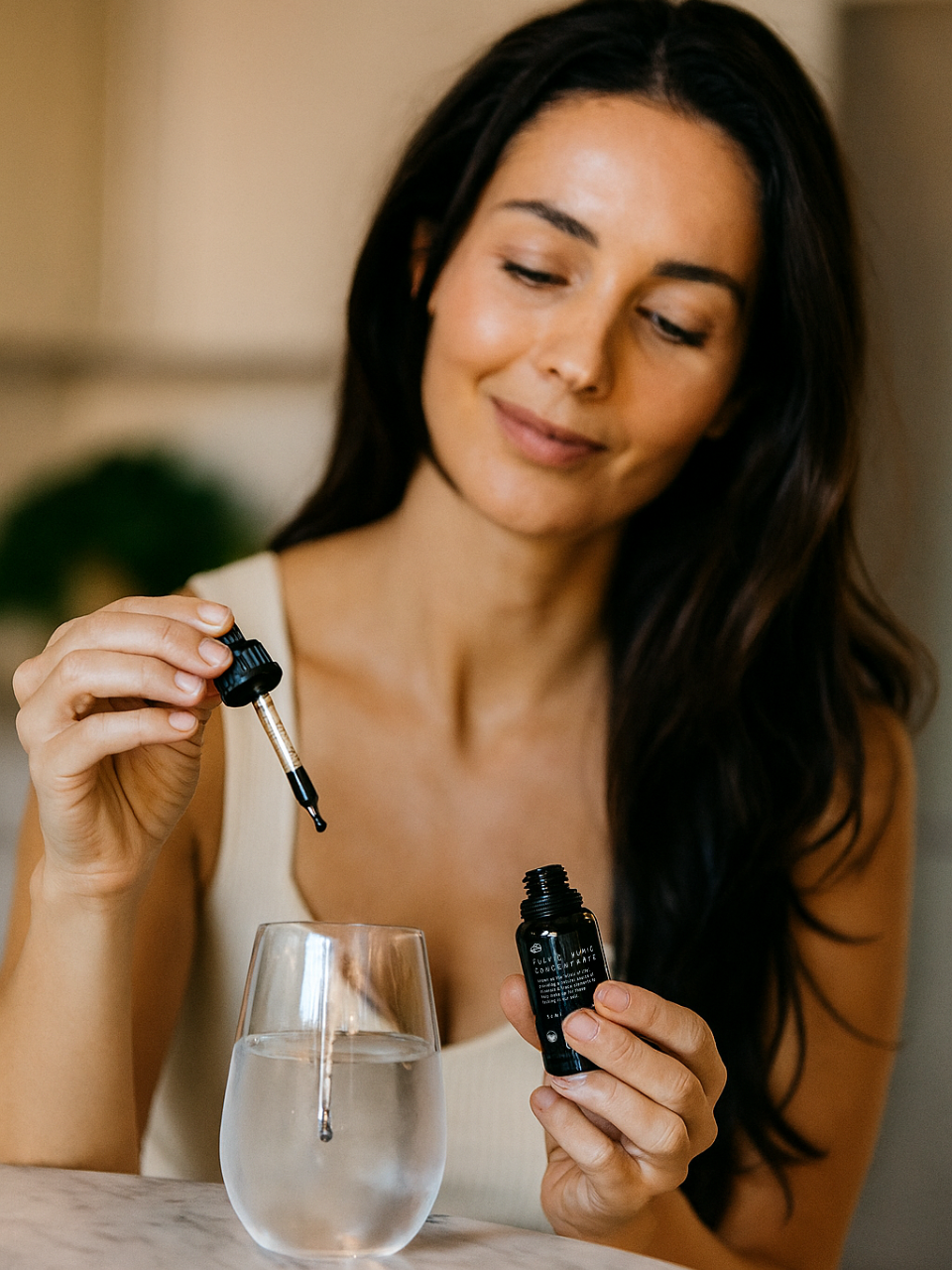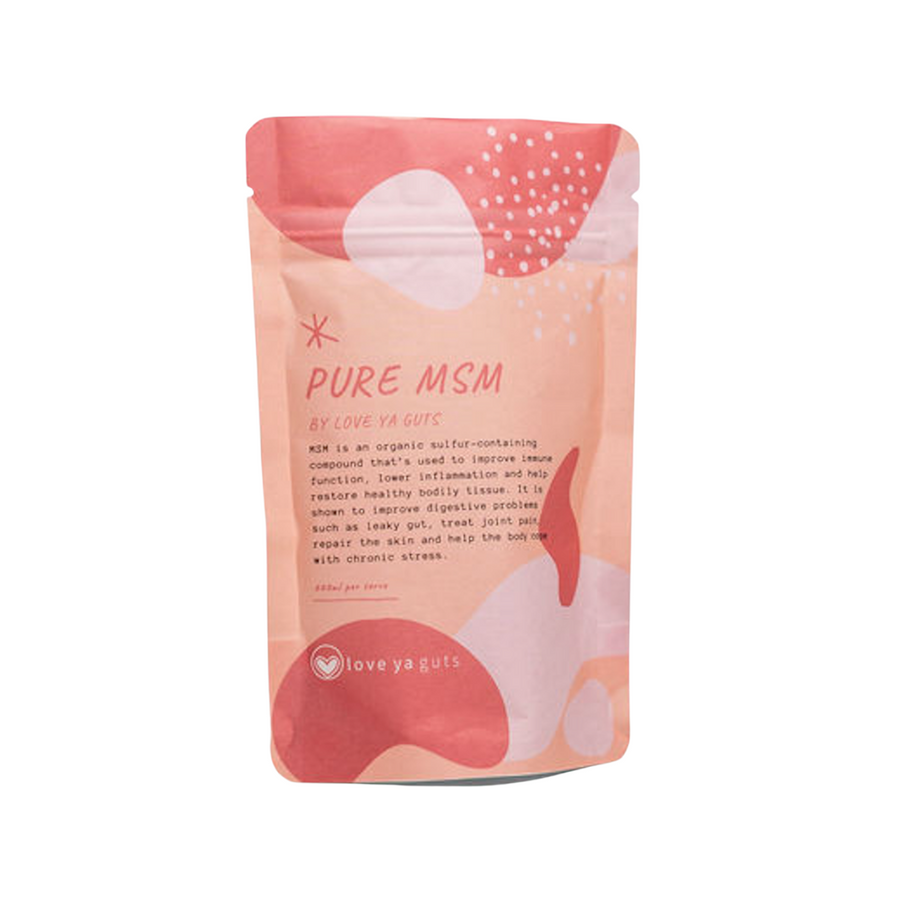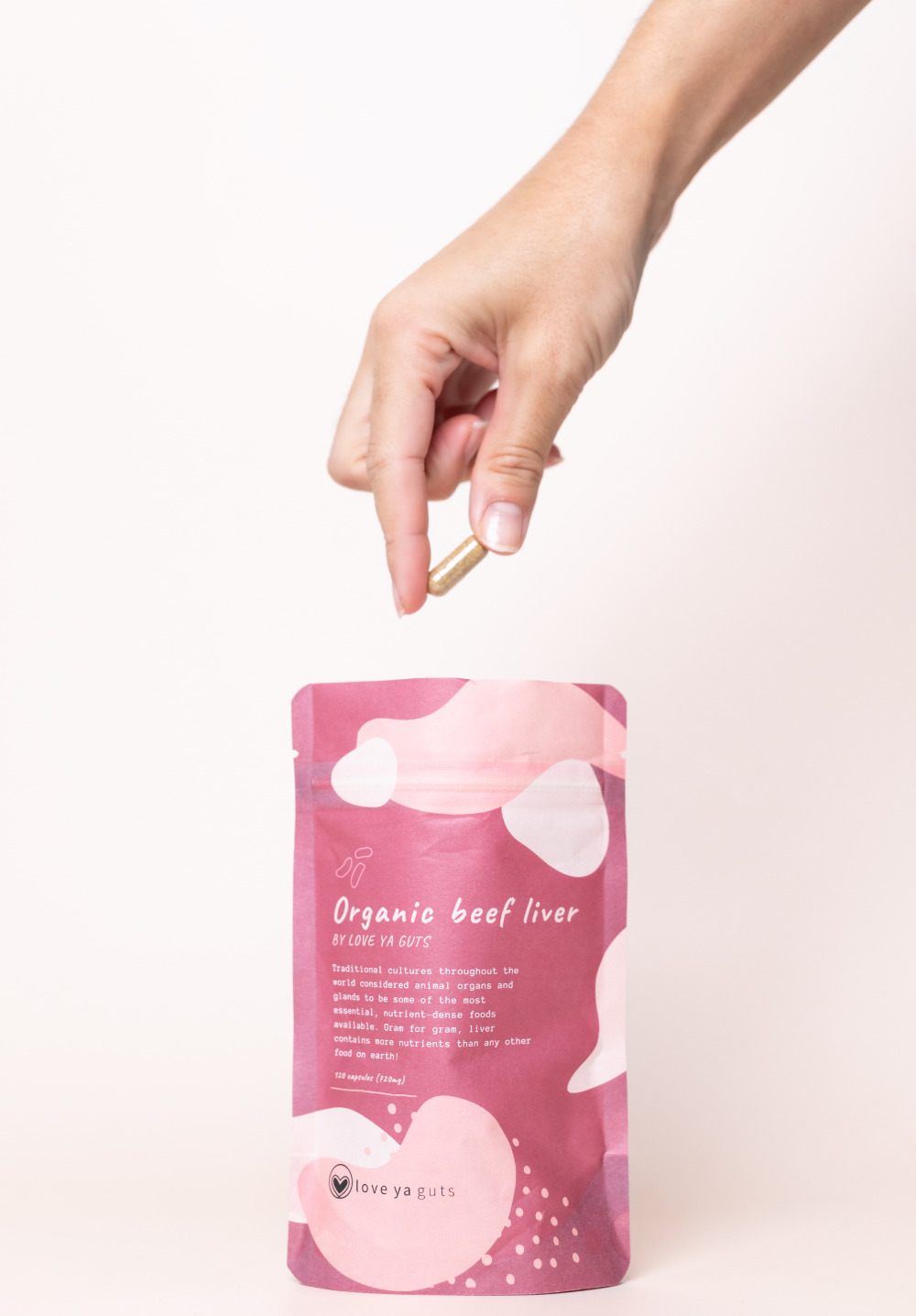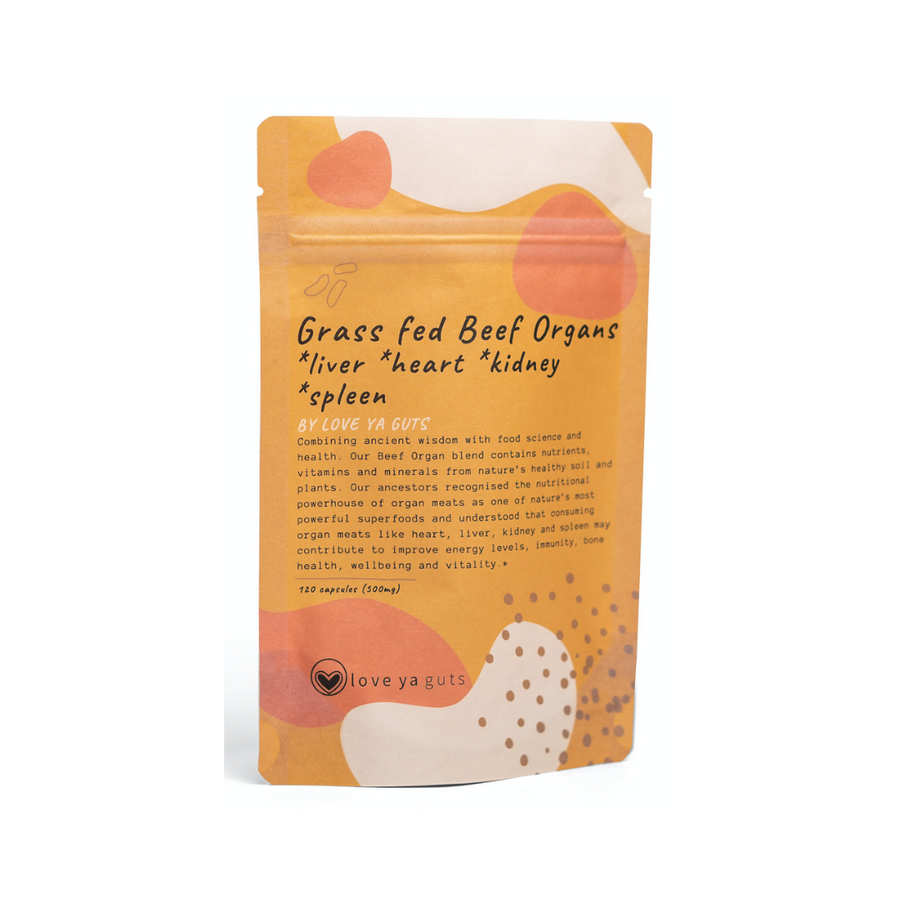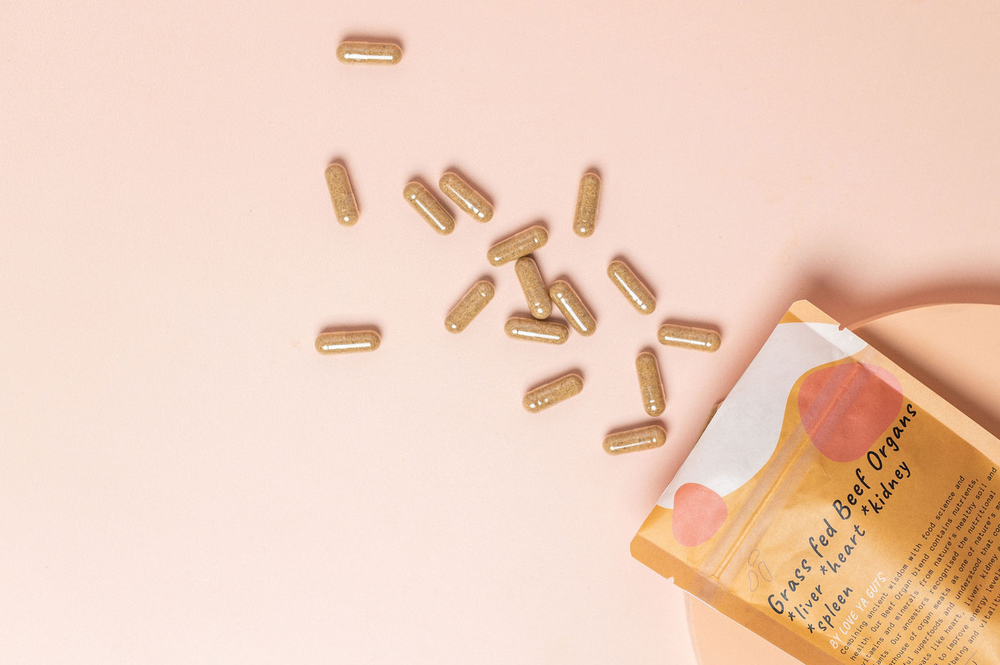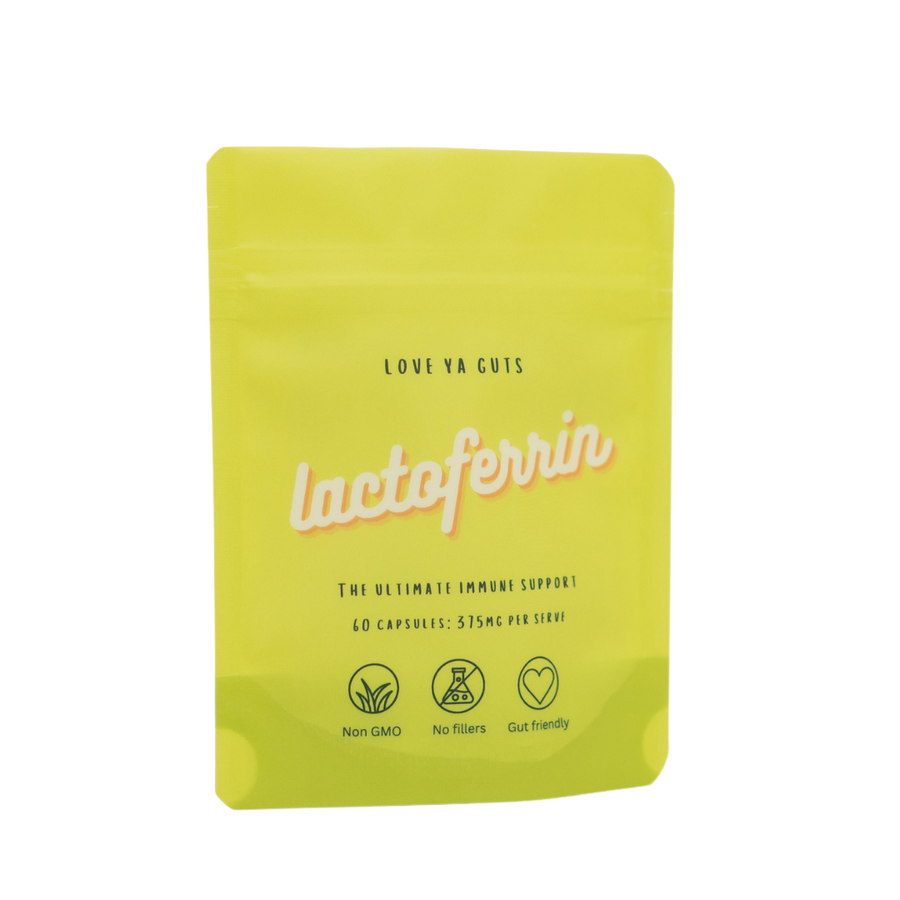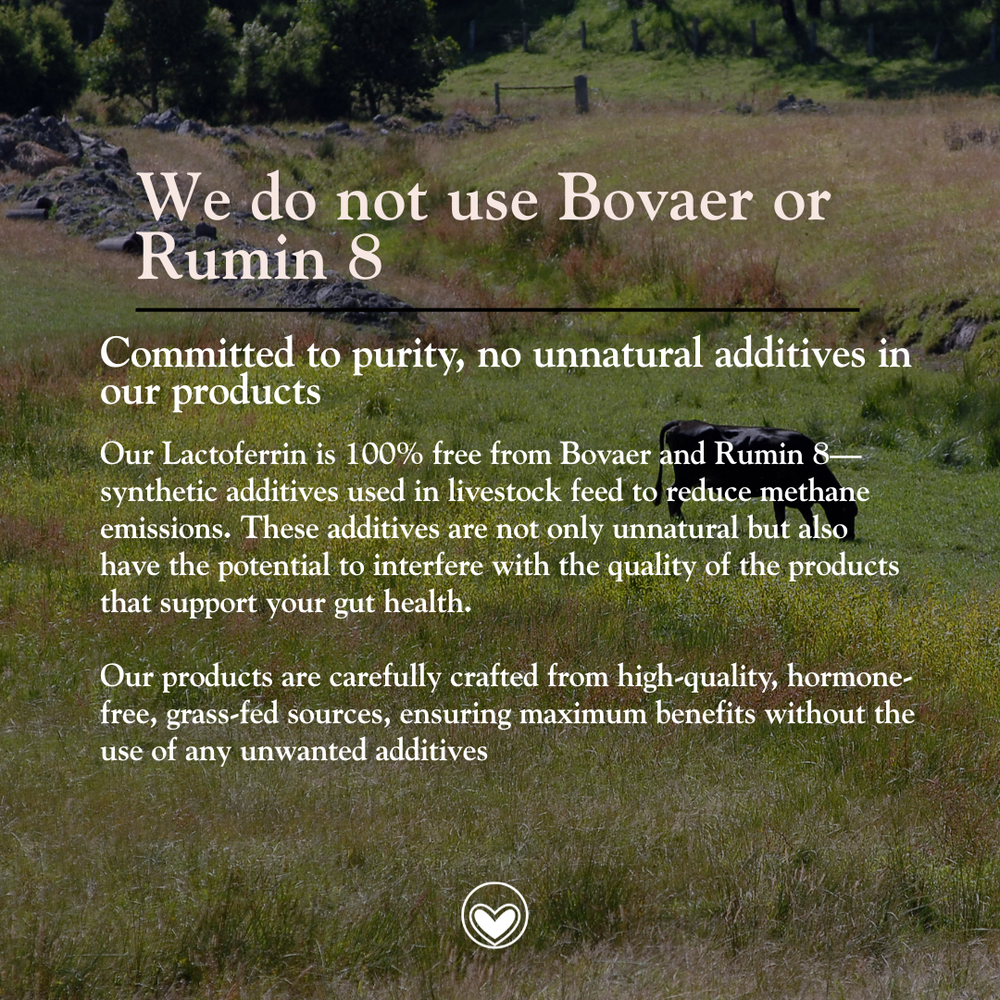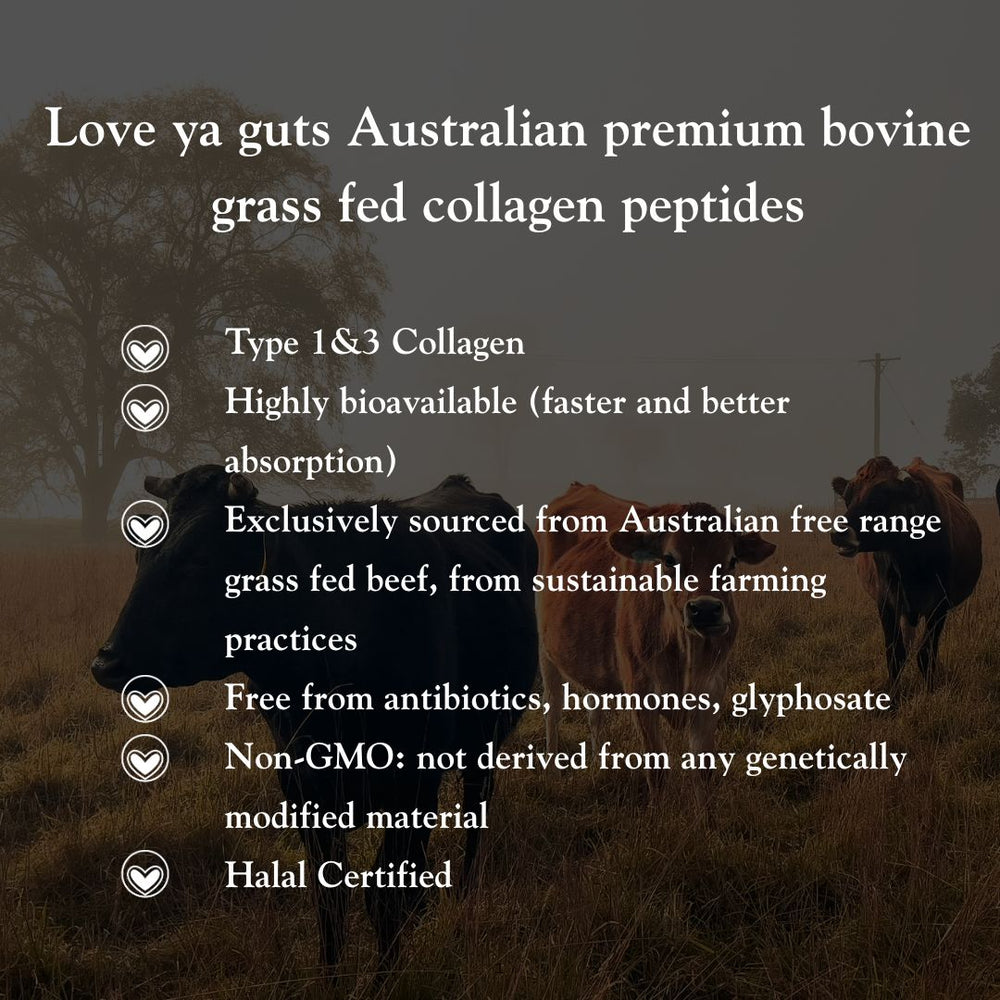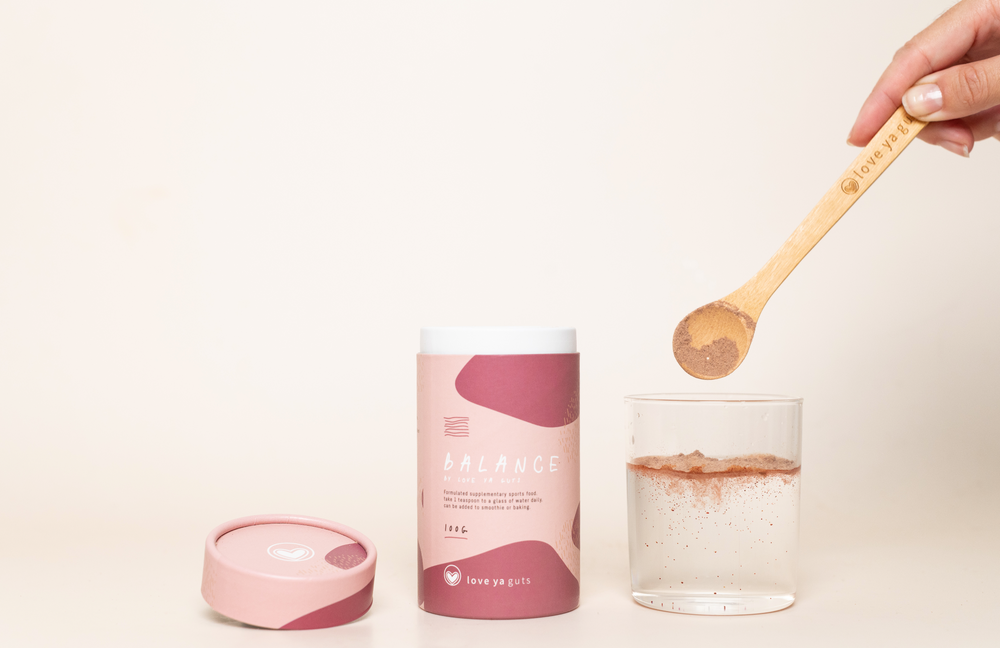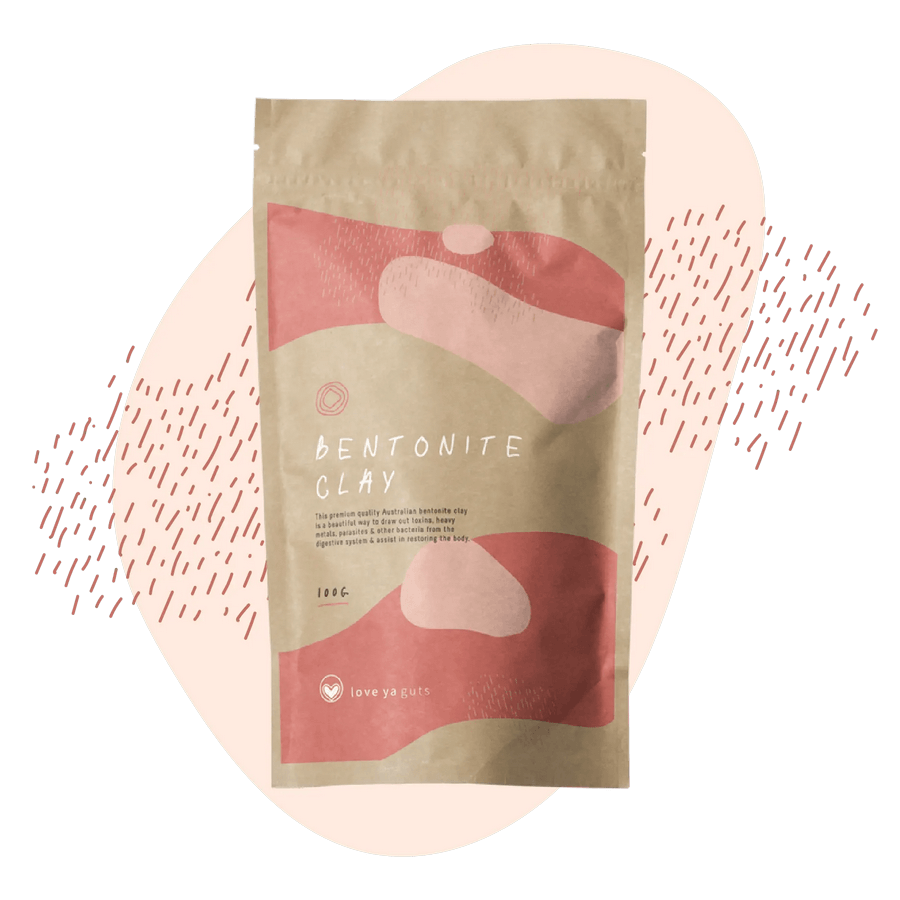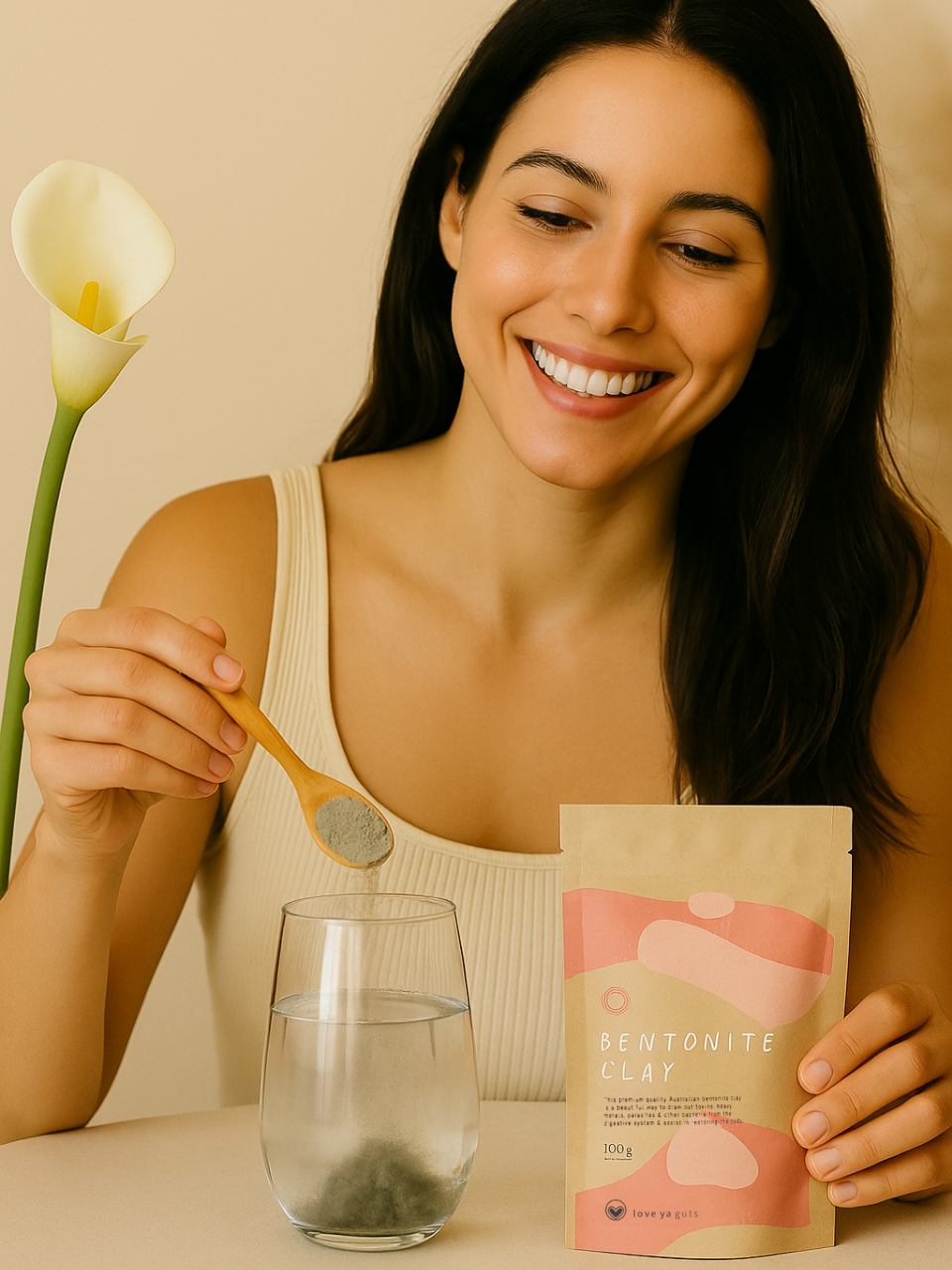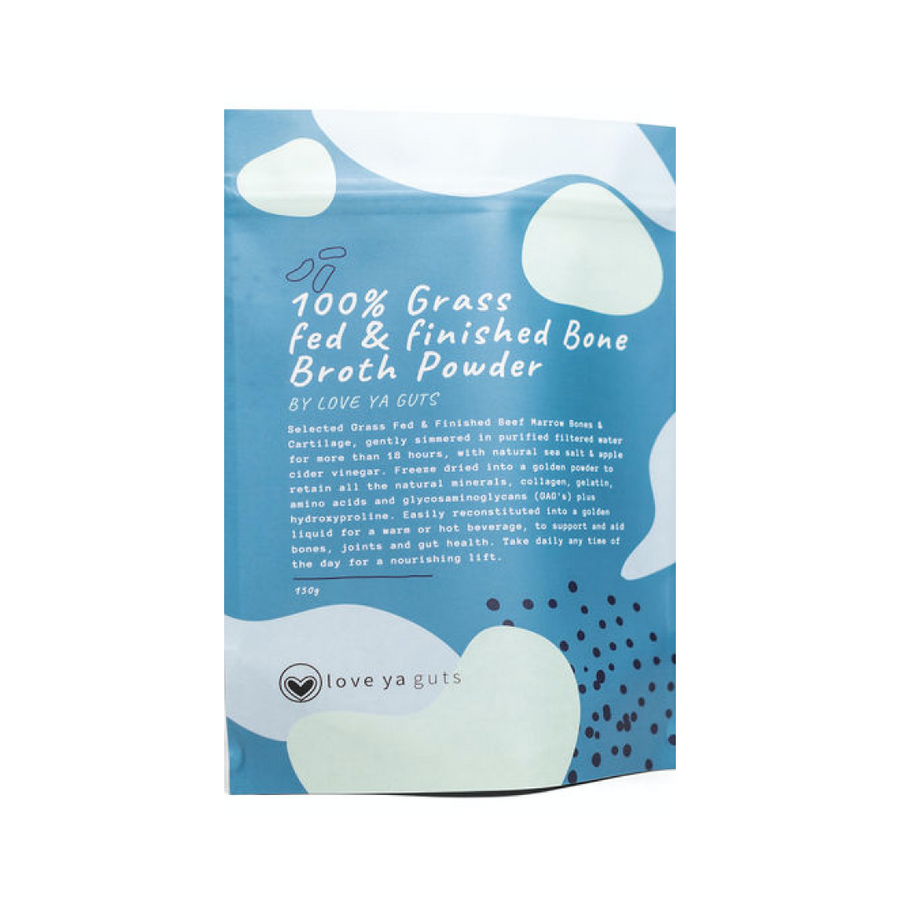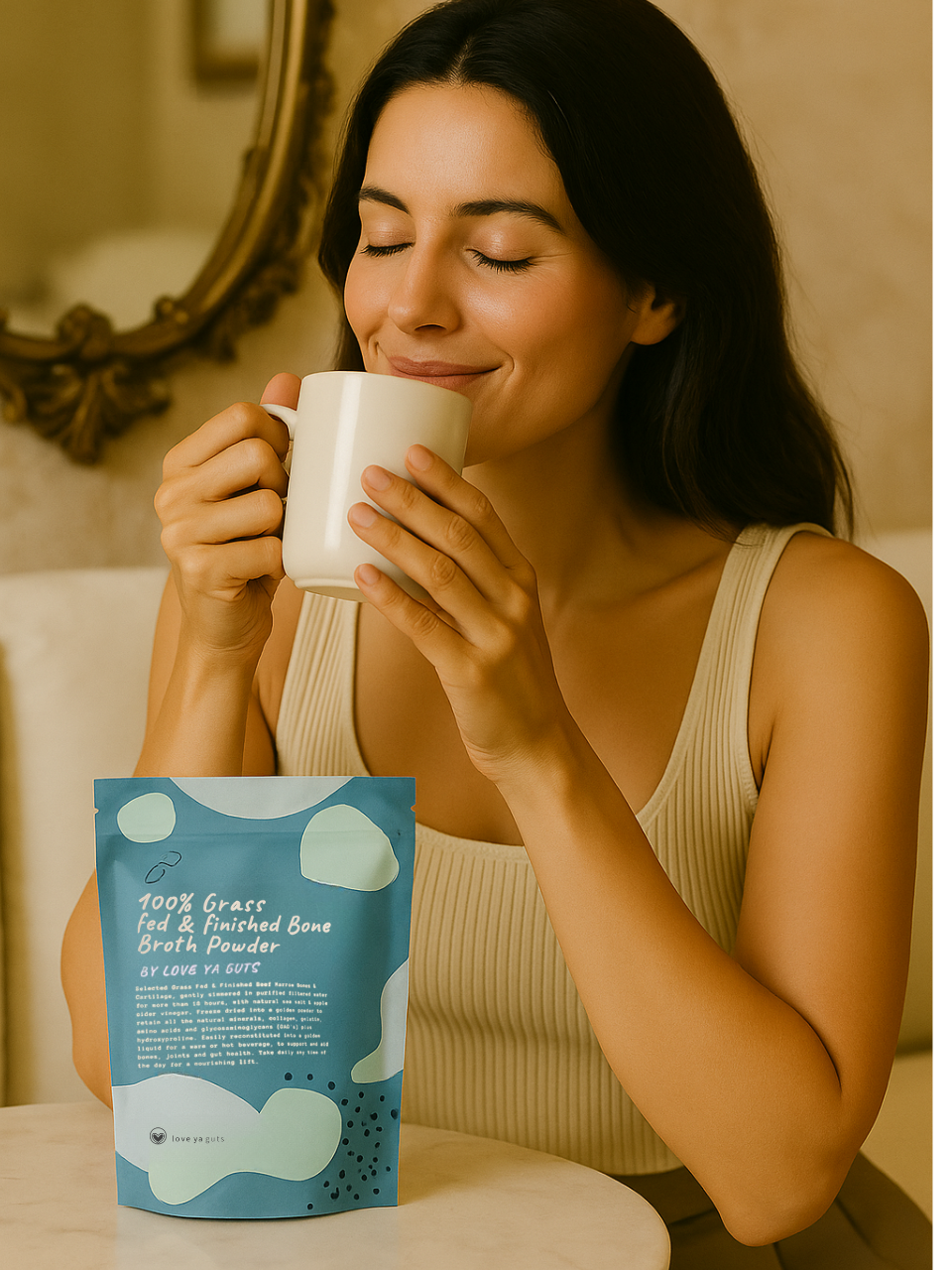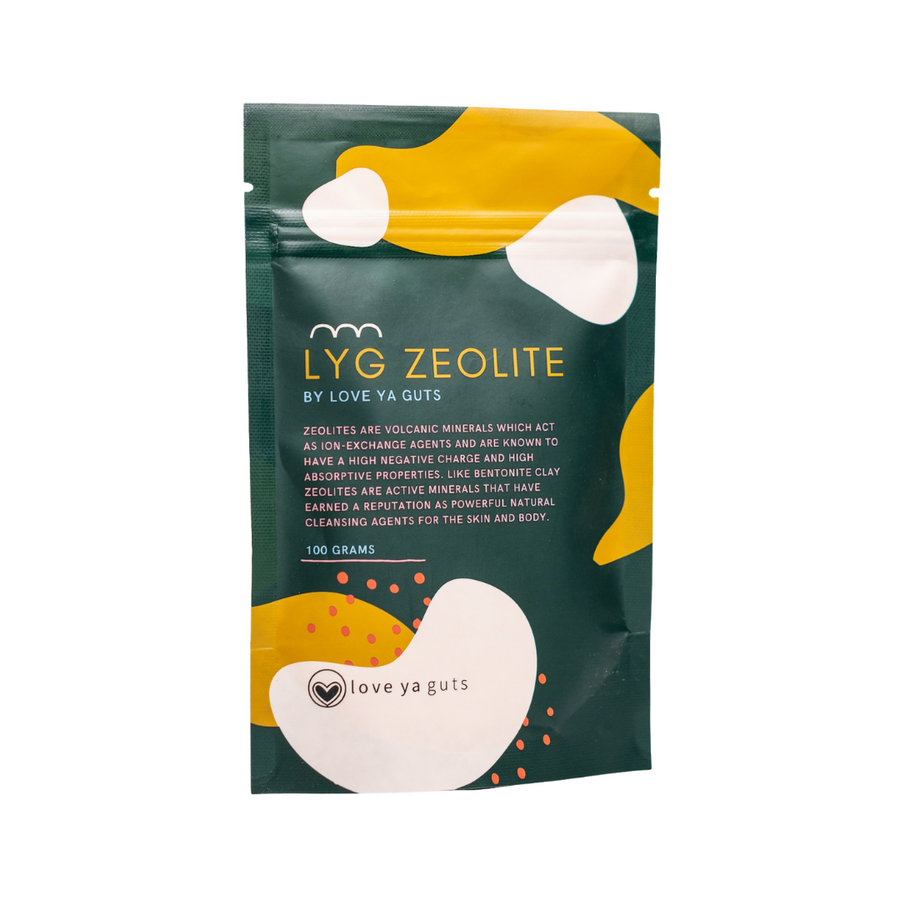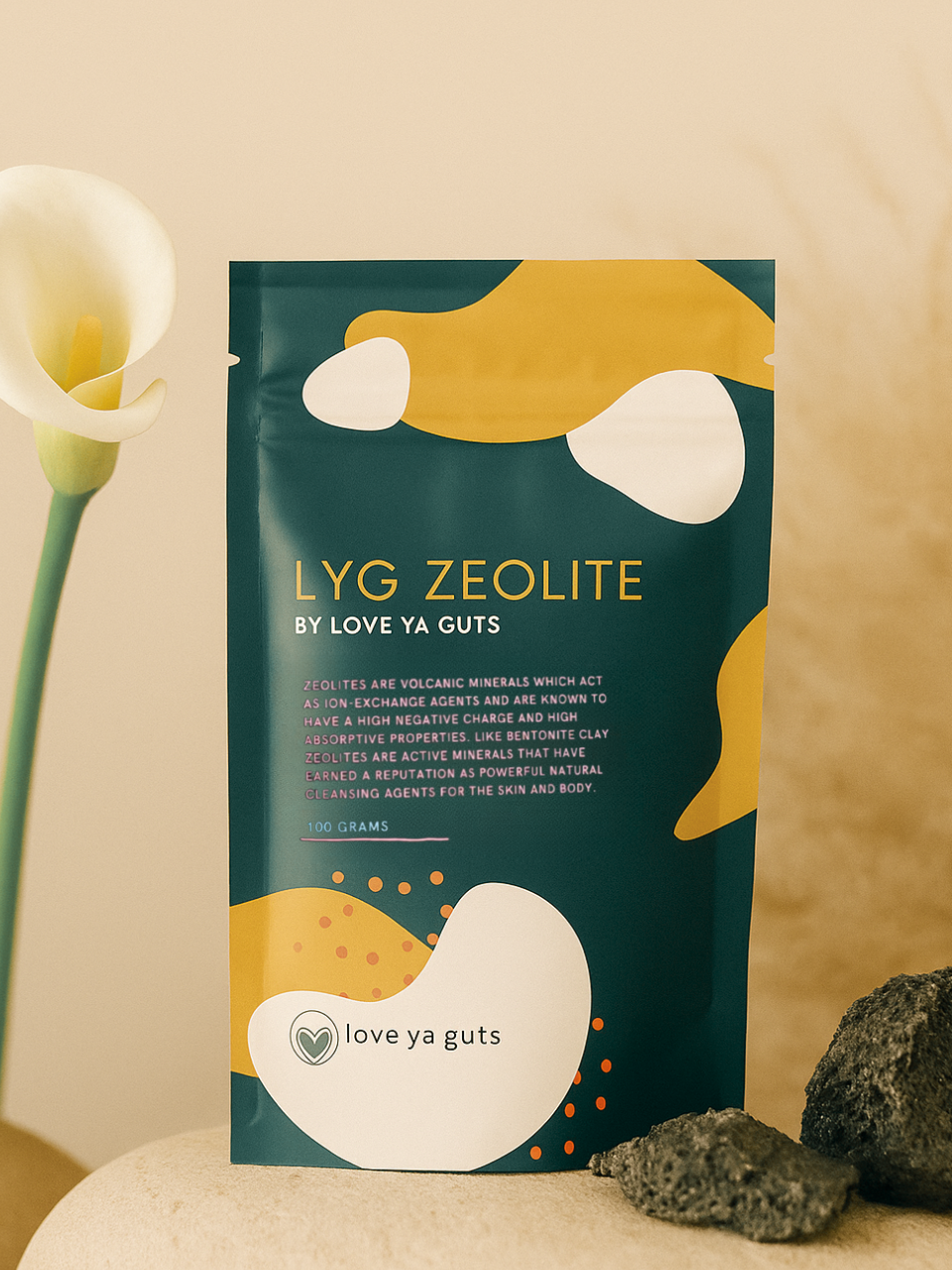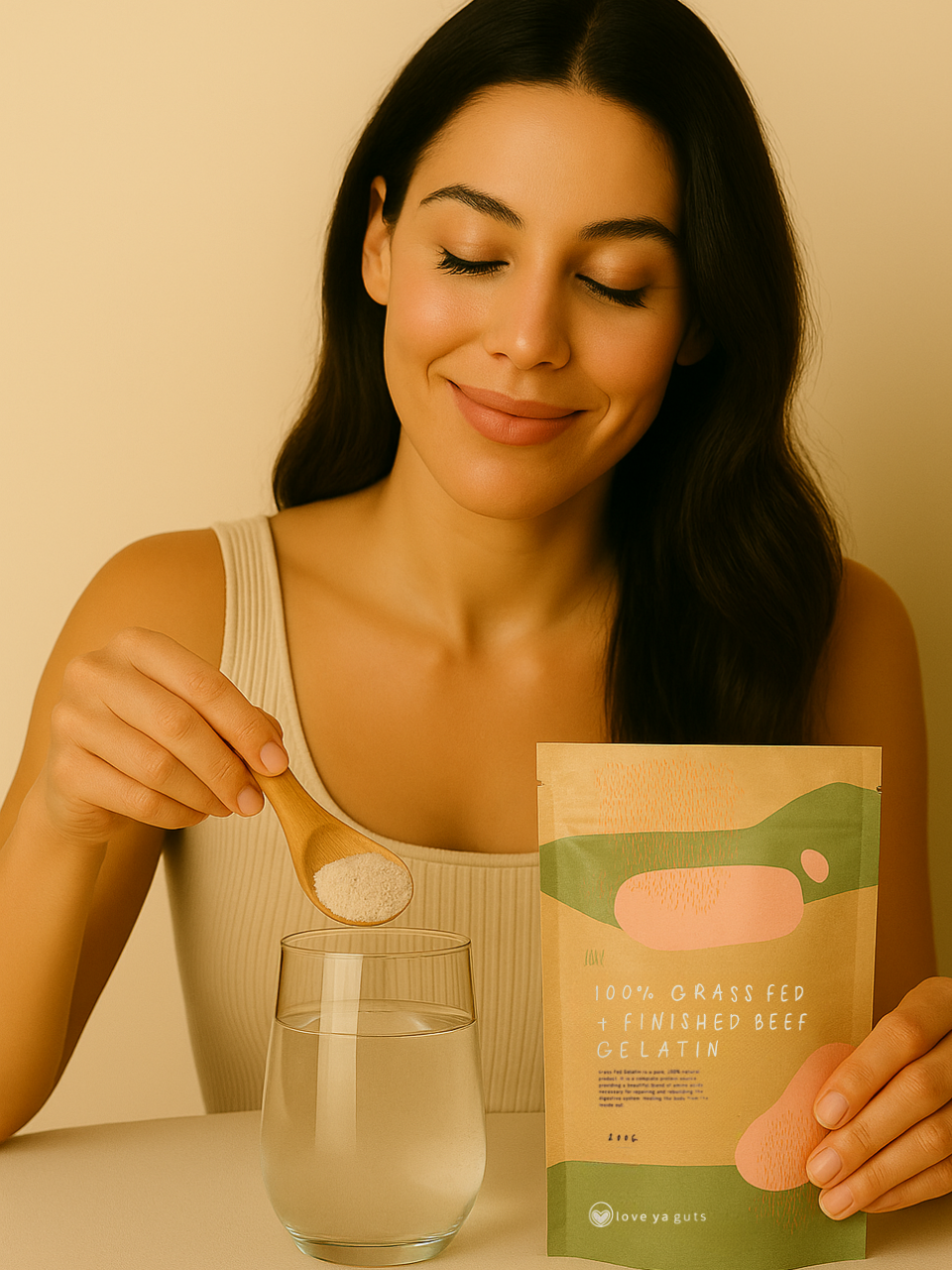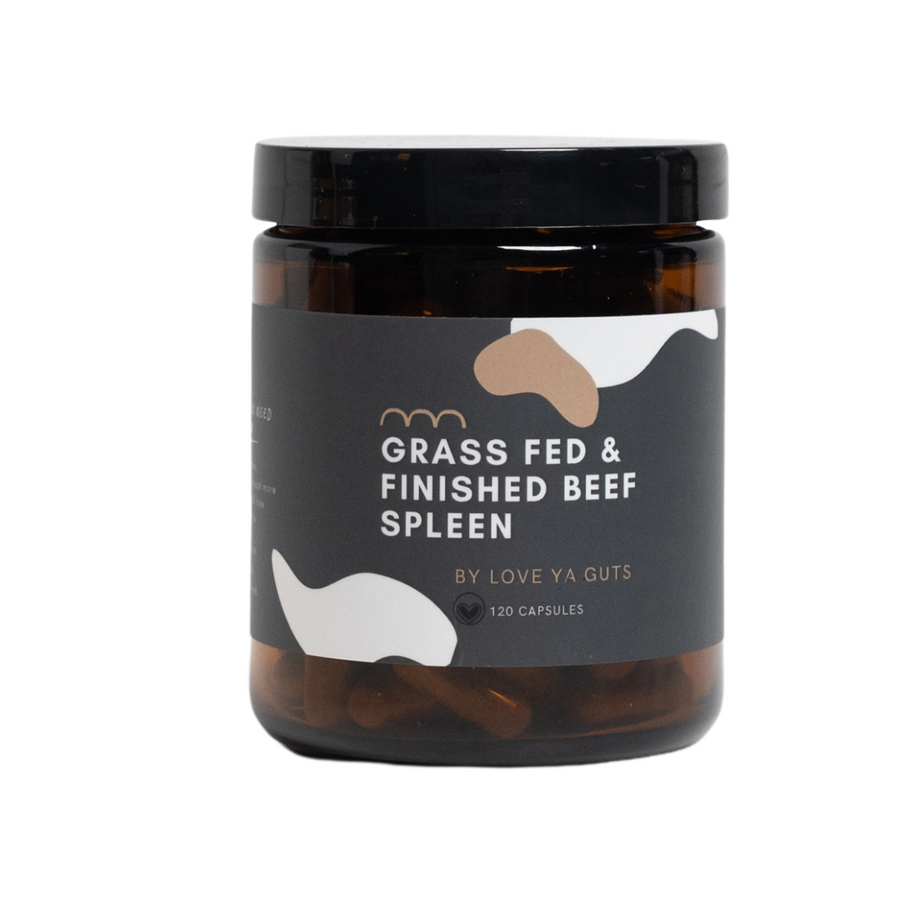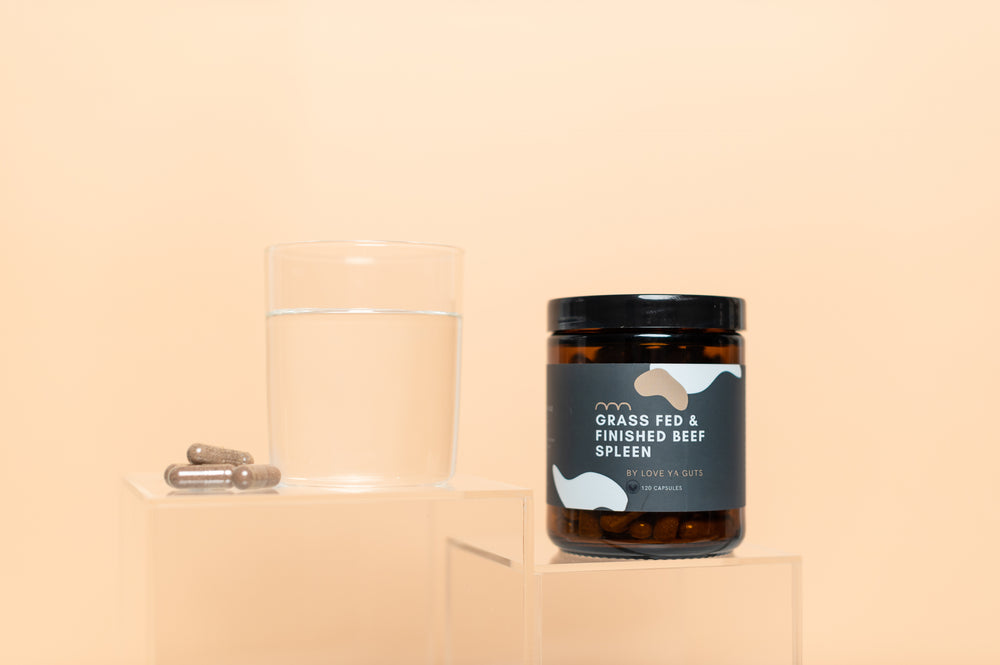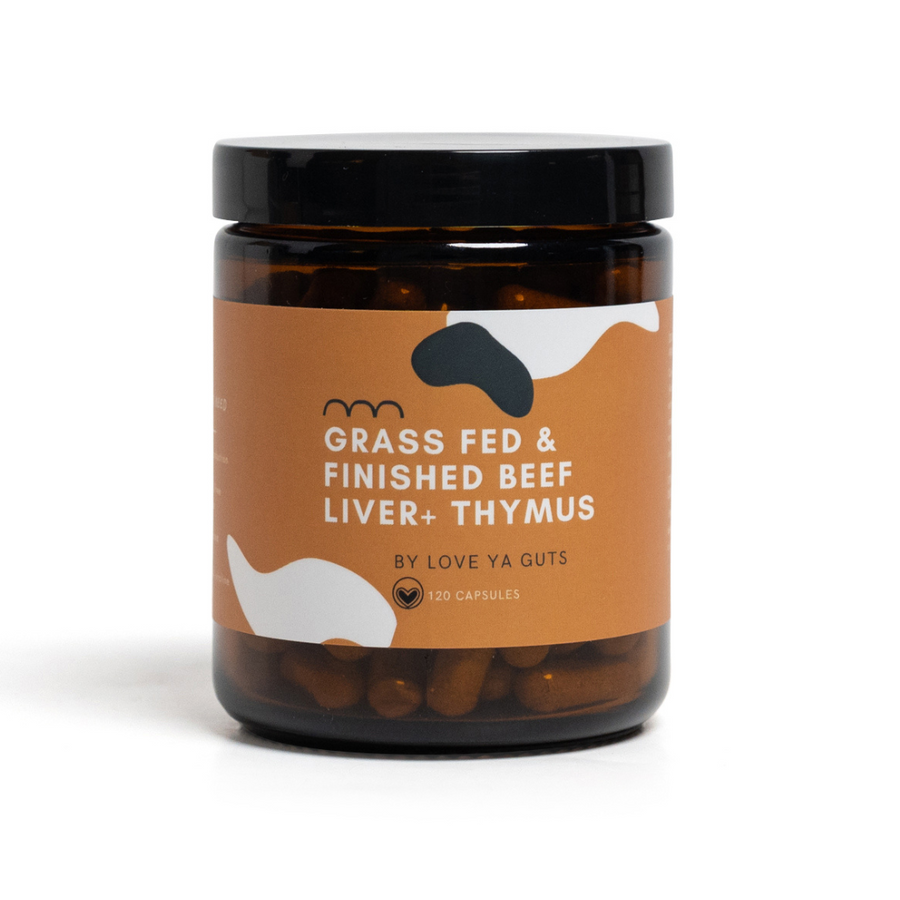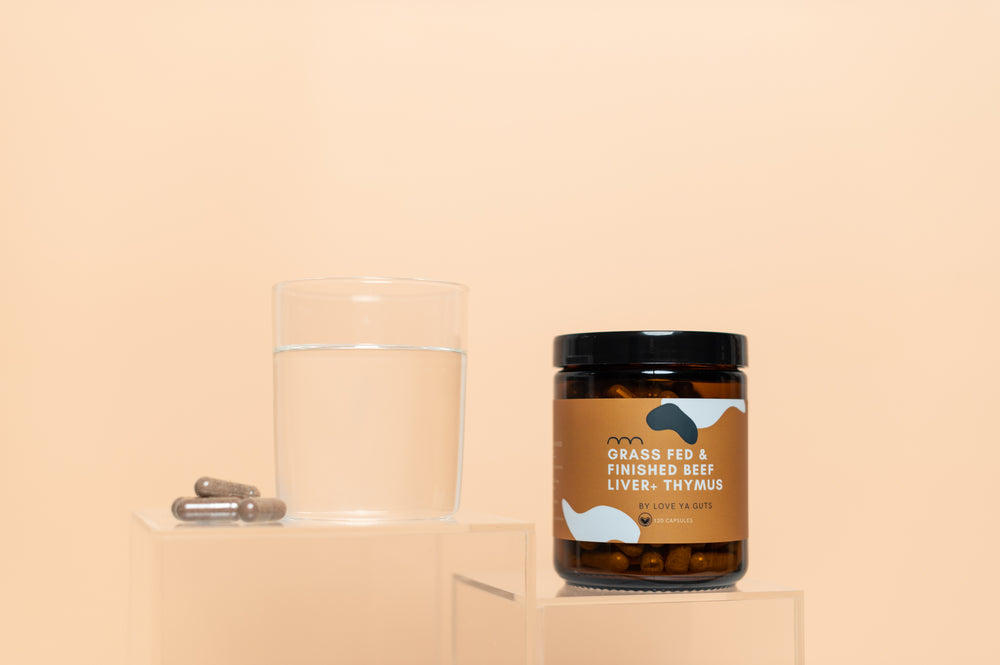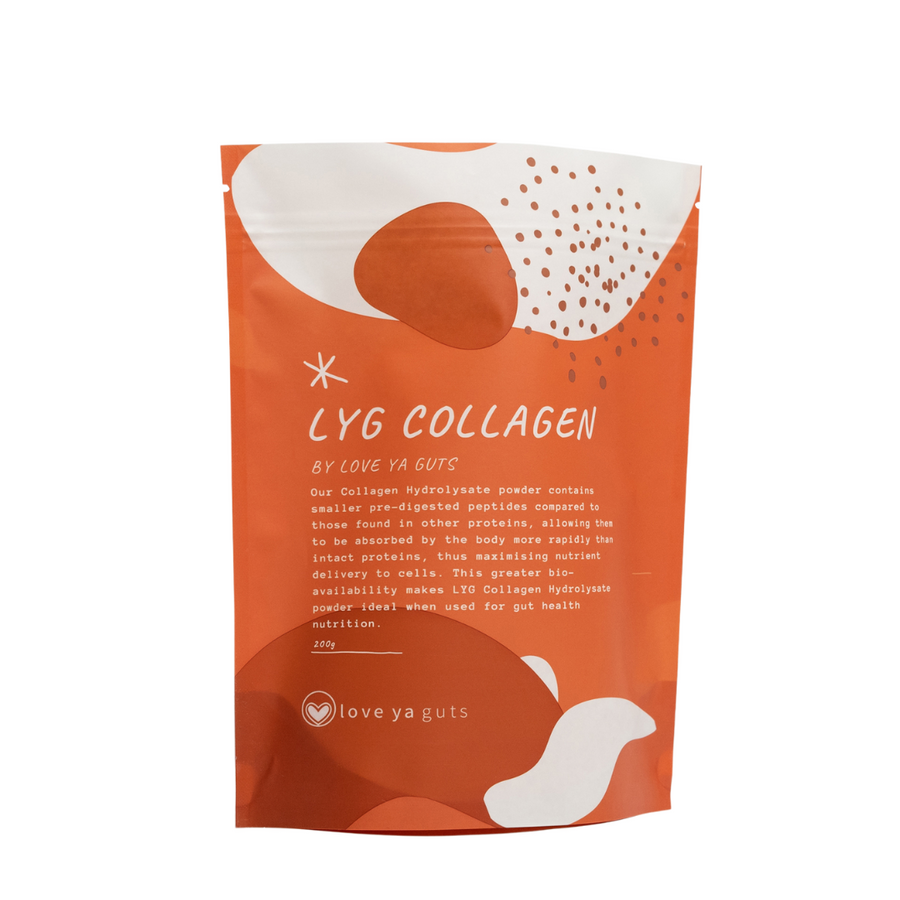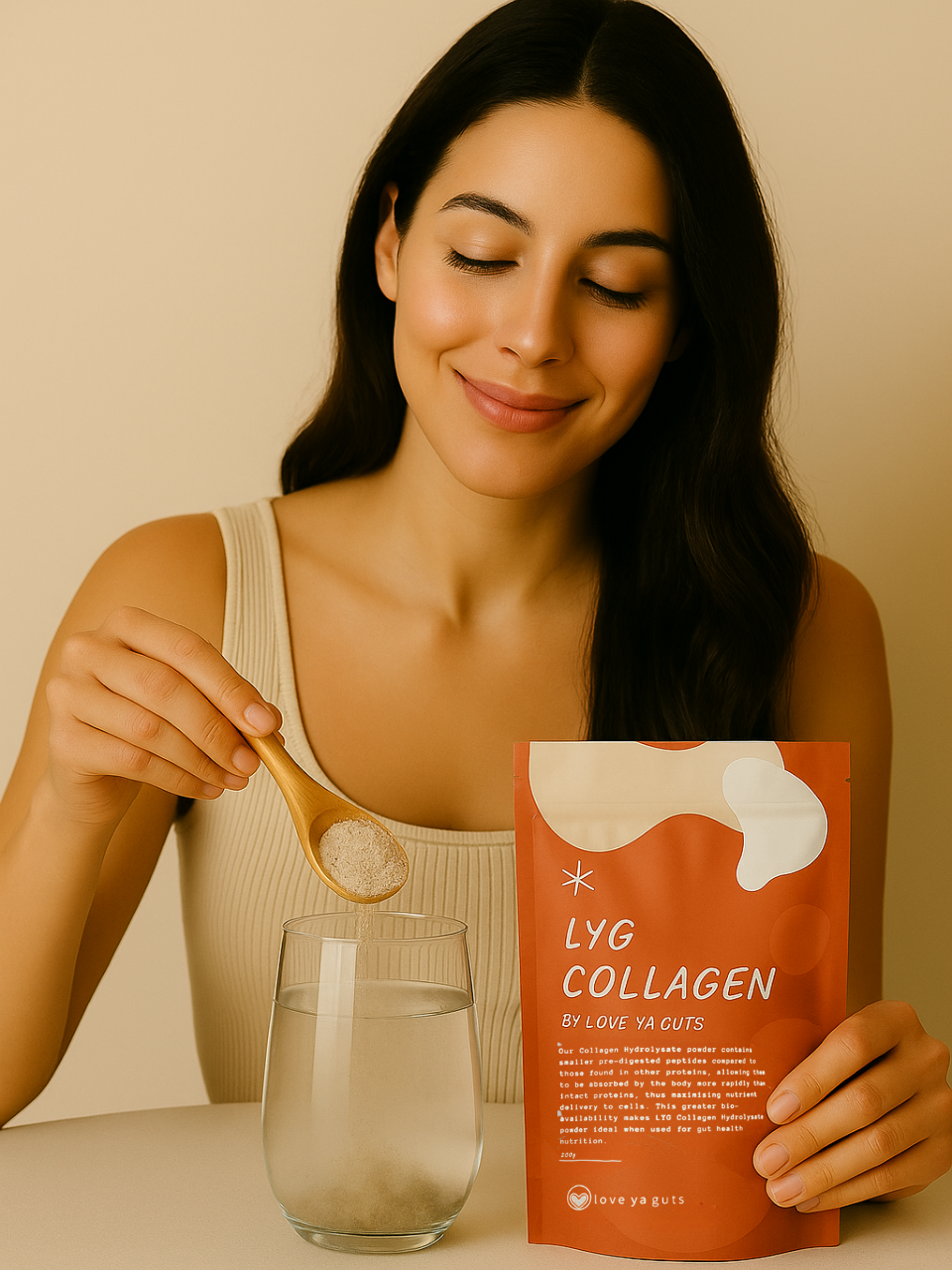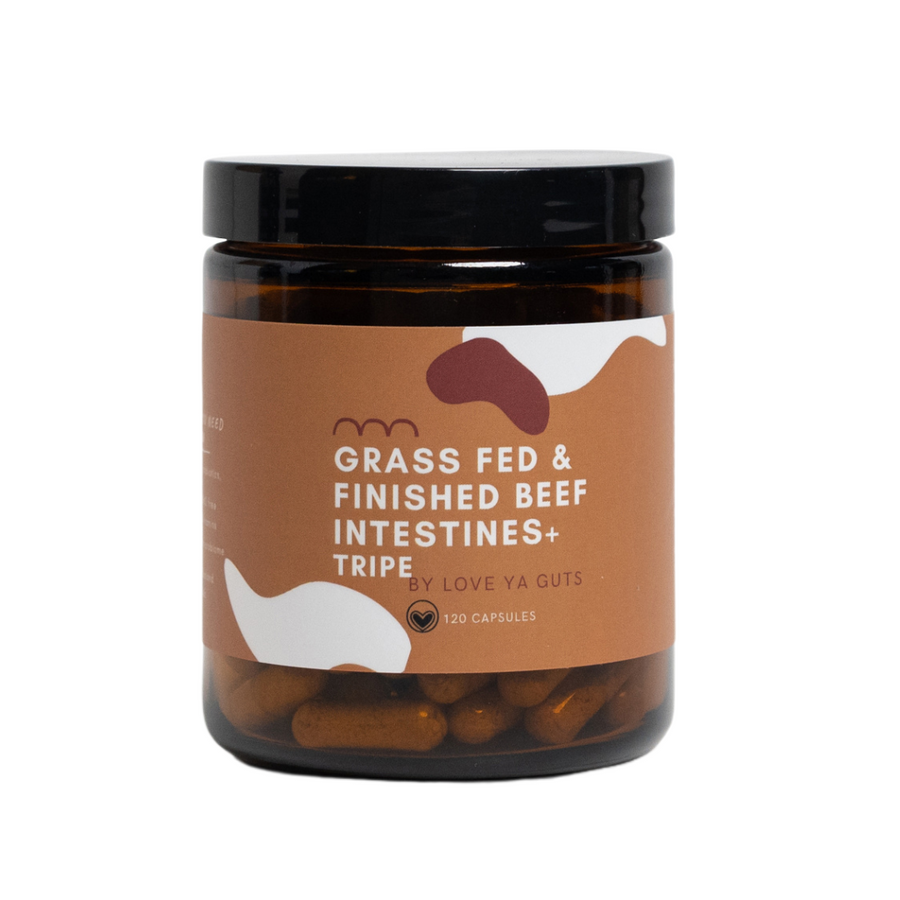Heme Iron vs Non-Heme Iron: Absorption, Food Sources, and the Gentle Way to Restore Your Iron

Heme iron (from animal foods, especially organ meats) is absorbed at ~15–35% and is less affected by meal inhibitors. Non-heme iron (mostly plant foods/fortified foods) is absorbed at ~2–20% and is highly affected by phytates, polyphenols, calcium, and low stomach acid. If you want efficient, gut-friendly iron with helpful co-factors (B12, folate, vitamin A, copper), whole-food heme iron from grass-fed organs is ideal. That’s why we made Love Ya Guts Beef Organ Capsules—bioavailable iron without the harsh edges of many synthetic tablets.
What Is Iron, and Why Does the Form Matter?
Iron enables haemoglobin to carry oxygen around your body. Low iron commonly shows up as fatigue, brain fog, breathlessness on stairs, pale inner eyelids, hair shedding, brittle nails, and lower exercise tolerance. The form of iron you eat (heme vs non-heme) changes how much your body can actually absorb and use.
Heme vs Non-Heme Iron: The Core Differences
| Feature | Heme Iron | Non-Heme Iron |
|---|---|---|
| Where it’s found | Animal foods—especially organ meats (e.g., liver), red meat, some seafood | Plant foods (leafy greens, legumes, nuts/seeds) & fortified foods |
| Chemical form | Iron bound in heme (haemoglobin/myoglobin) | Free iron salts/complexes |
| Typical absorption | ~15–35% | ~2–20% |
| Affected by inhibitors? | Less | More (phytates, polyphenols, calcium) |
| Digestive tolerance | Often gentler in whole-food form | Varies; some salts can irritate the gut |
Why it matters: heme iron is “pre-packaged” in a form your gut recognises, so uptake is more reliable, especially if your stomach acid is low or your meals contain inhibitors.
What Reduces (or Improves) Iron Absorption?
Inhibitors (mostly hit non-heme iron)
-
Phytates in grains/legumes; polyphenols/tannins in coffee, tea, cocoa, red wine
-
Calcium in dairy/supplements
-
Low stomach acid (e.g., PPIs/antacids), certain fibres
Enhancers
-
Vitamin C (citrus, berries, capsicum) can 2–4× non-heme absorption
-
Meat/fish/poultry factor enhances plant-iron uptake
-
Healthy stomach acid and gut lining
Practical tips:
-
Have coffee/tea away from iron-rich meals.
-
Pair plant iron with vitamin C.
-
If you’re plant-heavy, try soaking/sprouting legumes to reduce phytates.
-
If tablets upset your stomach, consider whole-food heme sources.
Best Food Sources of Iron
Top heme sources
-
Beef liver & mixed organs (nature’s richest whole-food iron)
-
Red meat (beef/lamb), some game meats
-
Oysters, mussels, sardines
Top non-heme sources
-
Lentils, chickpeas, kidney beans
-
Pumpkin & sesame seeds, cashews
-
Spinach, silverbeet, kale
-
Fortified cereals/flours
Whole-food synergy: Organ meats naturally include B12, folate, vitamin A, copper, choline—co-factors your body uses for red blood cell production, thyroid support, energy metabolism, and skin integrity.
Signs of Low Iron (Talk to Your Practitioner)
-
Ongoing fatigue, brain fog, headaches
-
Shortness of breath, fast heartbeat with mild effort
-
Pale inner eyelids, brittle/ridged nails, hair shedding
-
Dizziness when standing, restless legs, feeling cold
-
Frequent infections
Confirm with labs (ferritin, haemoglobin/haematocrit, transferrin saturation).
Who Should Be Cautious With Iron?
-
Haemochromatosis/iron overload patterns
-
Active infections (iron can feed pathogens)
-
Pregnancy—higher needs, but dosing should be clinician-guided
-
GI conditions—choose gentler forms and support digestion
Why Conventional Iron Tablets Can Feel Rough
Common iron salts (e.g., ferrous sulfate) can trigger nausea, constipation, cramping, and microbiome disruption. Absorption is inconsistent when stomach acid is low or meals contain inhibitors. Many people cycle on/off tablets without rebuilding stores.
The Gentle, Bioavailable Option: Love Ya Guts Beef Organ Capsules
What they are: freeze-dried, grass-fed Aussie beef organs (including liver) in a capsule delivering heme iron plus the co-factors nature intended.
Why customers choose them
-
Bioavailable heme iron that your body recognises
-
Whole-food matrix with B12, folate, vitamin A, copper, choline
-
No synthetics, fillers, or preservatives
-
Many find them gentler on digestion than typical iron tablets
-
Support for energy, hair/skin/nails, thyroid, and liver
How to use (best practices)
-
Start low if sensitive; build to the label dose.
-
Take away from coffee/tea/calcium for max uptake.
-
Pair with vitamin-C-rich foods.
-
Support stomach acid & gut lining (the Foundation Box helps).
-
Re-test labs with your practitioner after consistent use.
Prefer whole food over synthetics? Try Love Ya Guts Beef Organ Capsules a gentle, effective path to restoring iron.
FAQ
Is heme iron better absorbed than non-heme?
Yes. Heme iron is typically absorbed at ~15–35%, while non-heme averages ~2–17% and is more affected by meal inhibitors.
Can vitamin C help iron absorption?
Yes—vitamin C can 2–4× non-heme absorption. It doesn’t change heme as much (heme already absorbs well).
Do coffee and tea block iron?
They can reduce non-heme absorption if consumed with meals. Have them between meals instead.
Are organ capsules the same as iron tablets?
No. Organ capsules provide heme iron in a whole-food matrix with natural co-factors like copper and many people tolerate them better than synthetic iron salts that have side effects liek constpation and nausea
How long until I feel a difference?
Many notice energy improvements in 2–6 weeks, but rebuilding ferritin can take longer. Check labs with your practitioner.
Who should avoid extra iron?
People with haemochromatosis or iron overload patterns need medical guidance. Always consult your practitioner.
The Bottom Line
If you’ve been “eating iron” but still feel flat, the issue may be absorption, not just intake. Heme iron (especially from nutrient-dense organs) is what your body recognises, absorbs efficiently, and uses alongside its natural co-factors. That’s exactly why we created Love Ya Guts Beef Organ Capsules to deliver real, bioavailable iron without the harsh edges of many synthetics.


